|
|
|
Sort Order |
|
|
|
Items / Page
|
|
|
|
|
|
|
| Srl | Item |
| 1 |
ID:
190010


|
|
|
|
|
| Summary/Abstract |
Although Lord Plumer’s tenure as high commissioner for Palestine (1925–28) is sometimes characterized by mainstream Euro-American histories as a period of comparative peace, the year 1927 saw two major disruptions: the Jericho earthquake in July, which caused serious damage to towns and cities including Jerusalem, Nablus, and Lydda; and unrest among Jewish immigrants who found that the local economy had no jobs to offer them—or at least not ones at the European rates of pay to which they were accustomed. This article explores the ways in which each of these crises intersected with Palestine’s infrastructure—in particular its railways, roads, and housing stock. I argue that the disparate ways in which the British administration approached earthquake victims versus the unemployed, the help it offered (or failed to offer), and the policies it implemented are telling about the nature of British governance in Palestine in the mid-1920s and British administrative priorities and concerns. The Mandate authorities’ responses to the quake—characterized by selective negligence—reveal the colonial administration’s weakness, the contested ways in which colonial structures were shaped and operated in the early Mandate period, and the extent to which maintaining a facade before other colonial powers and the League of Nations outweighed substantive action.
|
|
|
|
|
|
|
|
|
|
|
|
|
|
|
|
| 2 |
ID:
190745


|
|
|
|
|
| Summary/Abstract |
India and China share about 3,488 km long International Boundary, which has three sectors: Western, Middle and Eastern. The Eastern sector comprises two Northeastern states, that is, Arunachal Pradesh measuring 1,124 kms and Sikkim measuring 219 kms, respectively. Due to recent changes in the geopolitical relationship with China, border management and transport infrastructure development have occupied centre stage. In recent years, the Government of India has taken initiatives to develop railway infrastructure in Northeast India. The study will focus on the role of railway transportation in Sino-Indian geopolitical competition. The study is based on secondary data collected from the office of General Manager, Northeast Frontier Railway, the Census of India and reports of Memorandums of Understanding between India and China. The study reveals that railway infrastructure along the border creates geo-psychological pressures on both countries, influencing the divergent geopolitical relationship between India and China. Railway diplomacy is a tool kit of critical geopolitics which reveals the contours of geopolitical competition in borderlands.
|
|
|
|
|
|
|
|
|
|
|
|
|
|
|
|
| 3 |
ID:
169360
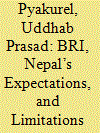

|
|
|
|
|
| Summary/Abstract |
Many Nepalese perceive China’s Belt and Road Initiative (BRI) as a useful means for the India-locked country to connect to other countries. However, this paper analyzes the weakening connectivity within the border areas of Nepal and Tibet since falling under Chinese control, concluding that China is unready to increase cross-border movement and trade facilities with Nepal due to perceived security concerns.
|
|
|
|
|
|
|
|
|
|
|
|
|
|
|
|
| 4 |
ID:
181331
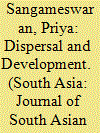

|
|
|
|
|
| Summary/Abstract |
This paper attempts to understand the development of Thane, a suburban city of Mumbai, by focusing on two moments, nearly a century apart, that contributed to its identity in formative ways. The first is the introduction of the first railway passenger train service in India between Bombay and Thane in 1853, and the second is the setting up of the first industrial estate in the state of Maharashtra in Thane in 1961. Despite spanning different periods and actors, the two moments share the same theme: dispersal from Bombay, of people in the first case and industries in the second, which resulted in Thane acquiring the status of first a suburb, and then an industrial city. These identities involve a certain degree of functionality in terms of Thane’s relationship with the larger metropolis of Mumbai, but simultaneously also give a distinct character to Thane’s trajectory of development.
|
|
|
|
|
|
|
|
|
|
|
|
|
|
|
|
| 5 |
ID:
100044


|
|
|
|
|
| Publication |
London, Atlantic Books, 2010.
|
| Description |
xxvi, 310p.
|
| Standard Number |
9781586489717
|
|
|
|
|
|
|
|
|
|
|
|
Copies: C:1/I:0,R:0,Q:0
Circulation
| Accession# | Call# | Current Location | Status | Policy | Location |
| 055485 | 385.3/WOL 055485 | Main | On Shelf | General | |
|
|
|
|
| 6 |
ID:
161055


|
|
|
|
|
| Summary/Abstract |
The Belt and Road Initiative (BRI), originally aimed at domestic economic development, has turned into an umbrella bringing together China’s ambitious projects to shape a new order in Eurasia, which directly influences Europe. The authors represent both Chinese and European perspectives on this issue. The BRI has become a mechanism to represent China abroad as well as a tool to ensure China’s competitive advantage in the world trade.This also has an impact on the entire trade system redirecting trade flows and making countries to compete for investments, which alters the existing order and each country’s place in this order. Buying shares of Italian strategic national companies, gaining control over ports and terminals along the BRI sea route, for example, the port of Piraeus, and other investments recently made by China force European countries to adapt its economic strategies to new conditions.
|
|
|
|
|
|
|
|
|
|
|
|
|
|
|
|
| 7 |
ID:
086709


|
|
|
|
|
| Publication |
2009.
|
| Summary/Abstract |
The impact of globalization on the Ottoman Empire and modern Turkey was first observed broadly in the railways of the transportation sector in the 1850s, and eventually shifted towards highways by the 1950s. This change profoundly affected the structure of the economy, ultimately leading to its integration into the global system. In this article, we look at three questions: what was the role of railways in the Ottoman Empire from the 1850s to 1914? What were the characteristics of modern Turkey's railway policies following the War of Independence? And, finally, how did transport policies shift from railways to highways following the Second World War? The Ottoman railway network held special importance for the Empire's economic integration into world markets. Foreign capital was invested in railways to provide crucial links between production areas and harbours with the goal of facilitating the export of raw materials and agricultural goods with the government's financial support. Until the proclamation of the Republic in 1923, the rail network was unbalanced and lines were unconnected, damaging both the economic unity and integration of the Ottoman economy. Forming a nation state on the basis of a national economy was the primary goal of Republican government. As such, all of the early Republican governments continued building and funding the rail network despite problems allocating sufficient financial resources and pressing needs for social (i.e. a lack of health and education services) and economic development. After the Second World War, following liberalization in economic and political life and an infusion of foreign aid (heavily invested in agriculture and road transportation networks), Turkey saw its economy grow. With this economic expansion, modern Turkey began to shift the focus of its transportation policies from railways to highways. As demand increased and highway investments skyrocketed, a highly developed road transport network began to take shape in Turkey, ultimately at the expense of the railway system.
|
|
|
|
|
|
|
|
|
|
|
|
|
|
|
|
| 8 |
ID:
153500
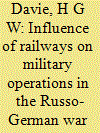

|
|
|
|
|
| Summary/Abstract |
In common with much of the historiography of the Russo-German War of 1941–1945, there has been extensive study of the role of railways in the war, with either side concentrating on different aspects of the subject. But to date there has been little attempt to make a comparative study of the railways on both sides and to gauge the effect of differences in capacity on military operations and their outcomes. This lack has allowed one or both sides to obscure key failures and to deflect the influence on military operations away from railways. Yet the ubiquitous nature of railways for travel and transport in Russia, due to the large size of the country and the inability of motor vehicles to support operations beyond 300–400 km, meant that every military operation of the war was dependant on railways, and the way in which they were used was a key element in their success or failure. The current study aims to compare operating practices between Soviet and German military railways, to give estimates of the railway capacity available to both sides, and then to use this information to gauge the effect of this capacity on military operations.
|
|
|
|
|
|
|
|
|
|
|
|
|
|
|
|
| 9 |
ID:
001009


|
|
|
|
|
| Publication |
New Delhi, Manohar, 1991.
|
| Description |
95p.: ill., maps.Hbk
|
| Standard Number |
818542554X
|
|
|
|
|
|
|
|
|
|
|
|
Copies: C:1/I:0,R:0,Q:0
Circulation
| Accession# | Call# | Current Location | Status | Policy | Location |
| 040519 | 923.854/KHA 040519 | Main | On Shelf | General | |
|
|
|
|
| 10 |
ID:
094481
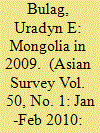

|
|
|
| 11 |
ID:
180311
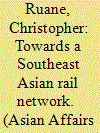

|
|
|
|
|
| Summary/Abstract |
This article will relate a history of planned railway routes passing through Bangkok or elsewhere in Thailand in pursuit of linking the potentially vast commercial market of China with the transport hub of Singapore. Those plans historically did not come to full fruition. But the current Chinese-backed plans mean that a rail link between China and Singapore is finally likely to become a reality within the coming decade. The benefits for Thailand are contested: while there will be more passenger and freight capacity the financial cost will be high. But there will for the first time in history be a direct rail connection from China to the Malayan peninsula. Indeed in theory it will be possible to board a train in Britain and step off one in Singapore, without having used any other form of transport on the way. Chinese motivations are commercial and geopolitical, as were those of historical schemes by other countries. Unlike historical schemes, however, China looks set to make the planned southeast Asian railway network a reality.
|
|
|
|
|
|
|
|
|
|
|
|
|
|
|
|
| 12 |
ID:
191081
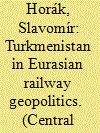

|
|
|
|
|
| Summary/Abstract |
Central Asian railways are usually discussed in the context of the Belt and Road Initiative, and most studies deal with the main railway line at the heart of this grandiose China-backed project. Turkmenistan represents a somewhat extraordinary example due to the state’s massive investments in railways, which have almost doubled the length of the country’s rail network in recent decades. The building of the new railways was aimed at linking Turkmen regions together with direct internal connections instead of relying on complicated cross-border passages. It was also intended to make Turkmenistan a transport hub of the Eurasian transport system. Based on the landlocked countries concept and using the analysis of available statistics and transport flows along the two main rail corridors passing through Turkmenistan (east–west and north–south), the paper investigates the gap between these ambitious goals and the actual results, including the reasons for these processes. The emergence of strong competition in the form of other (more efficient) routes has signified a setback for the expansion of Turkmenistan’s railway network.
|
|
|
|
|
|
|
|
|
|
|
|
|
|
|
|
| 13 |
ID:
179847
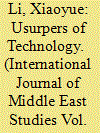

|
|
|
|
|
| Summary/Abstract |
This article examines banditry, embezzlement, and other insider crimes along Egyptian railway lines during a period when British officials exerted centralized control over the Egyptian railway and financial austerity had a negative impact on the rail sector. By exploring the motives and tactics of railway crimes, I posit that criminals, by making claims on and use of the technology outside the purview of state regulations, expressed their heterogeneous desires to redistribute social wealth, repurpose the technological promise of modern railways, and confound intentions of colonial governance. Using new archival materials, this article utilizes a bottom-up approach to examine grassroots activism, everyday knowledge, informal networks, and the social mores and norms that criminals harnessed to discern infrastructural vulnerabilities and elude surveillance from the colonial state. Ultimately, I contend that criminal acts uncovered social crises otherwise hidden under the shadow of the exterior prosperity and stability of late 19th-century Egypt.
|
|
|
|
|
|
|
|
|
|
|
|
|
|
|
|
|
|
|
|
|